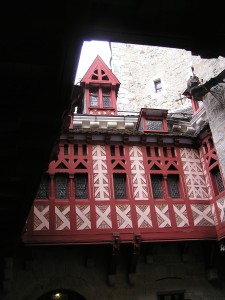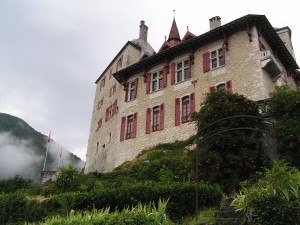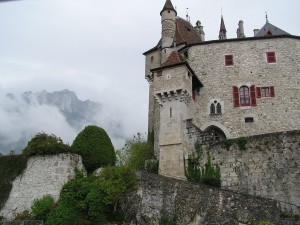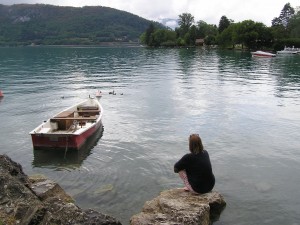
The 'improvements' of the artist Comte René de Menthon in the 1880s seem almost too 'Disney', but he was determined to adapt an austere fortress for modern living
What is there not to like about the Château de Menthon-Saint-Bernard? The craggy twelfth-century fortress (the name in Celtic means ‘rock bound’) of the mighty Menthon family, set on a platform high above Lake Annecy; three great stone-and-mortar towers with Sleeping Beauty turrets (added by the artist Comte René de Menthon in the 1880s), all jumbled around an inner courtyard (which, regrettably, was reduced in size by the same Comte René, albeit in the cause of adapting the castle for modern living); an ancient chapel (first mentioned in 1262); an austerely splendid library stuffed with rare pre-Revolutionary volumes – the Histoire des Sires de Salins and the Senatus Dolani, inherited from the Richardots of Dôle, caught my eye – old parchments with royal seals and incunabula; ubiquitous heraldry; a Grand Salon with stupendous views over the lake and a vast hooded fireplace, surmounted by one of the many inscriptions here of the family’s cri de guerre (‘Toujours Menthon, Partout Menthon’); fine family portraits and a gorgeous Tapisserie des Gobelins; a lady’s chamber sealed for warmth with a remarkably verdant set of Aubusson tapestries; the highly atmospheric Salle des Pèlerins, on the first floor of the tour du lac, still equipped with its great fifteenth-century oak dining table, where meals were prepared and consumed by all the members of the household, along with any pilgrims who happened to be passing this way; and, most satisfyingly, an eponymous family in occupation since at least 1150 (when they are first documented), though they may well have been in possession since the ninth or tenth century; a family which credibly claims St Bernard of Menthon, the patron saint of mountaineers, as a member, and the castle as his birthplace in 1008; one that was as powerful as it was prestigious, its dependencies reputedly stretching in the thirteenth century from the shores of the lake at Talloires to the very gates of Geneva; one to which, moreover, I am connected in various ways, having a double descent (through Viry, Montjoye, Klinglin and Faletans) from a sixteenth-century Hélène de Menthon (who assuredly would have dined at that great table in the Salle des Pèlerins), and even closer cousinship through the barons de Klinglin, a line that diverged in the eighteenth century. This, for me, is castle heaven!

The urbane Comte Bernard de Menthon had already softened the lakeside aspect of the castle, installing in 1740 the salle à manger and Grand Salon
‘Uncle’ Bernard
It was the ambition of the young Bernard de Menthon to become a monk, but his parents had other plans, pledging him in marriage to a lady of the house of Miolans. On the eve of their wedding, he had slipped out of the window of his chamber and fled to Aosta, where he took orders.
As Archdeacon of Aosta, he later founded the hospices of the Grand-Saint-Bernard as refuges for Alpine travellers, who were the constant prey of marauding Saracens and brigands. St Bernard’s hospices revolutionised Alpine travel, allowing the development of commercial and pilgrim routes between France and Italy. He died in 1081 but has given his name to the enormous dog, first bred by the fifteenth-century ‘canons of Saint-Bernard’, that, with a barrel of cheering liquor tied to its neck, used to rescue travellers buried in avalanches.

